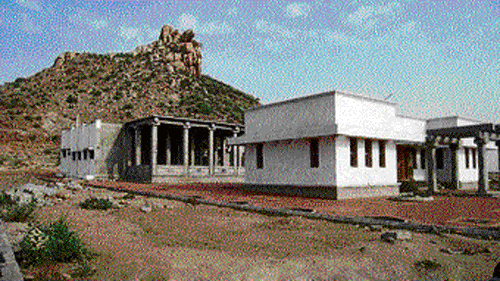
Bruce Foote, the father of south Indian geology, traversed through erstwhile Mysore state and conducted several surveys in and around Kappagal hill near Bellary. His contribution to the study of Karnataka’s geology has been immense, writes P Satyanarayana Rao
May 30, 1863 is a memorable date as it marks an important milestone in the history of Indian archaeology; it was on that day that Robert Bruce Foote, the father of Indian prehistory and South Indian geology, first discovered a palaeolith from Pallavaram near Chennai or erstwhile Madras. He also picked up a palaeolith in the State’s Hunsigi in Shorapur taluk.
Bruce Foote (1834-1912) integrated geological and pre-historic expeditions over a period of 40 years in various parts of southern and western India. In fact, the Foote collection of antiquities were all sold to the Madras Government Museum in 1906 and is a valuable treasure. This includes the Saganakal collection also.
Foote joined the Geological Survey of India on Sept 28, 1858 and was later invited to head the newly formed Mysore Geological Department in Bangalore. Ravi Korisettar, Prof., Dr Pavate Chair for Art and Archaeology in Karnatak University, Dharwad has supplied the required material to help the ASI apply for a commemorative stamp to the Director General of Post and Telegraphs. He has offered a working design of the stamp marking both the death centenary and the 150th anniversary of Pallavarm.
Foote traversed through the erstwhile Mysore state and published his field notes in the first memoir of the Mysore Geological Department, explains Korisettar, who has been made Hon. Director of the pre-history museum at Bellary. Foote not only carried out explorations in several districts of Andhra Pradesh and Tamil Nadu but also in Belgaum, Dharwad, Bijapur, Raichur and Bellary in Karnataka.
Work at Kappagal
Midway through his career, Foote shifted his area of activity to the Rayalaseema region. He was based in Bellary for a long time. Sanganakal complex of five hills, five km away from Bellary, was discovered as a stone-age site by William Fraser who took Bruce Foote to the now famous Kappagal hill there, then called Peacock hill with its black stone vein. In fact, ‘Kappagal’ means black stone.
Foote carefully studied artefacts and antiquities scattered on the surface and also fixed to the ground — mainly burial monuments in stone. He was particularly interested in the ash mounds at the foot of the hill and suggested that these contained ashes of deliberately heaped cattle dung which were set on fire periodically as a form of cultural ritual.
Bruce Foote sent samples of the ash to be examined in a London laboratory where it was confirmed that the cinder mounds were burnt cattle dung. Ash mounds were thus linked to Neolithic culture. Foote has given a graphic description of the cultural remains that included Neolithic pottery, stone tools, microliths and a rich variety of beads from a variety of ornamental stones.
He also gave detailed descriptions of stone tools and other material found on top of the Kappagal hill, also called Hiregudda and Peacock hill, in the Sanganakal complex. He was therefore convinced that this site had the largest neolithic stone factory he had seen anywhere in the former Madras presidency. He has included all these findings in his report, ‘Geology of Bellary district’ (1885).
This contains a separate chapter entitled ‘Economic pre-history’ tracing the detailed efforts at locating raw material sources for manufacturing ornamental beads and stone tools, drawn from a distance of over 15 km in the Sandur schist belt. Foote identified a variety of local sources of rock material such as dolerite, gabbro, granite and quartz.
Korisettar adds that Foote, in addition to the study of the Sanganakal complex of hills, had extended his work to the Tungabhadra valley and even in and around Hampi, focussing attention on neolithic village settlements and ash mounds in places like Kudathini, Gadiganur, Toranagallu and Halkundi. He drew special attention to the study of the Kudathini ash mound which is located on a pass between Hospet and Bellary, called the Budikanuma pass, on high ground. Local legend has it that the ash mound is the consequence of burning the remains of victims of a battle and one story calls it ‘Hidimba Kasta’ (the funeral pyre of the Rakshasa Hidimba).